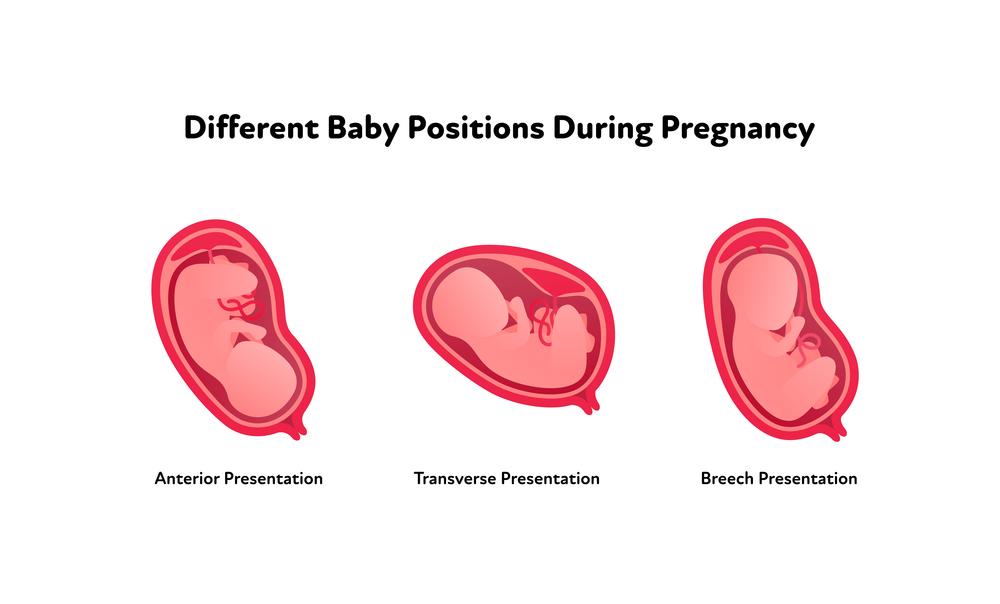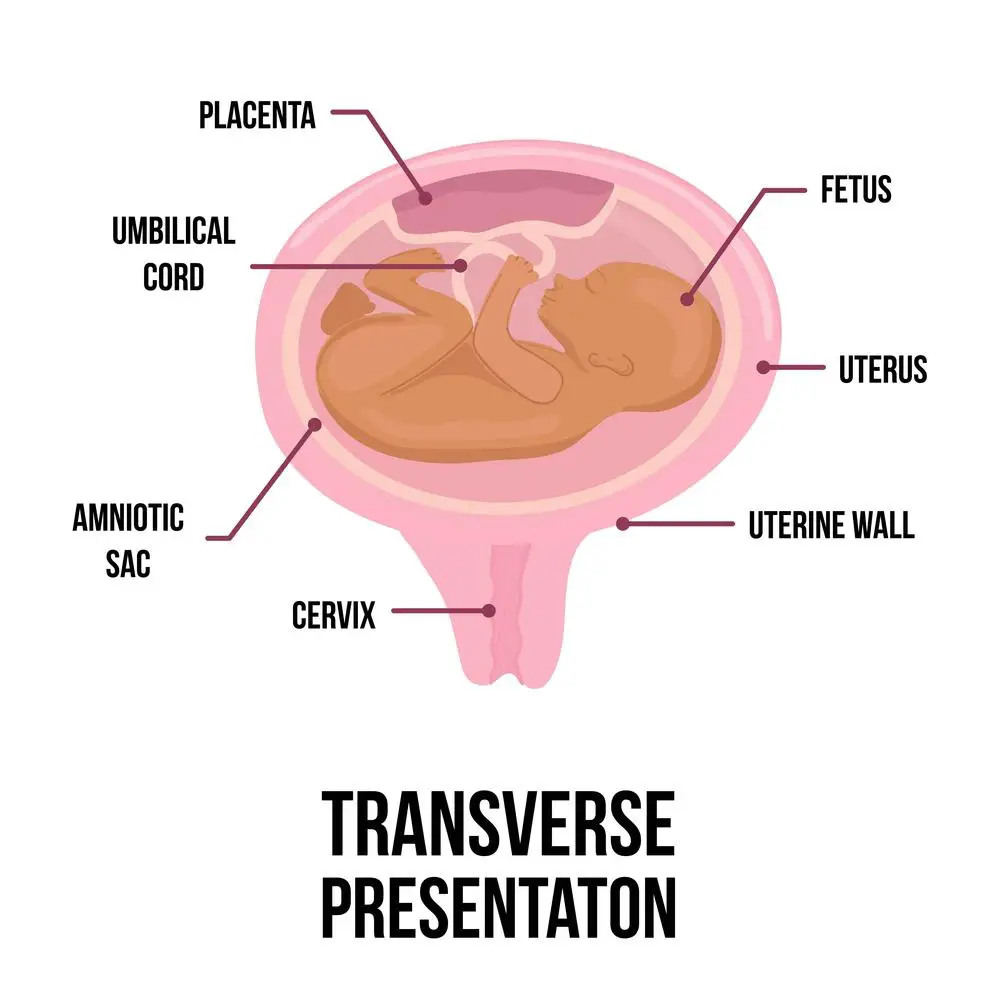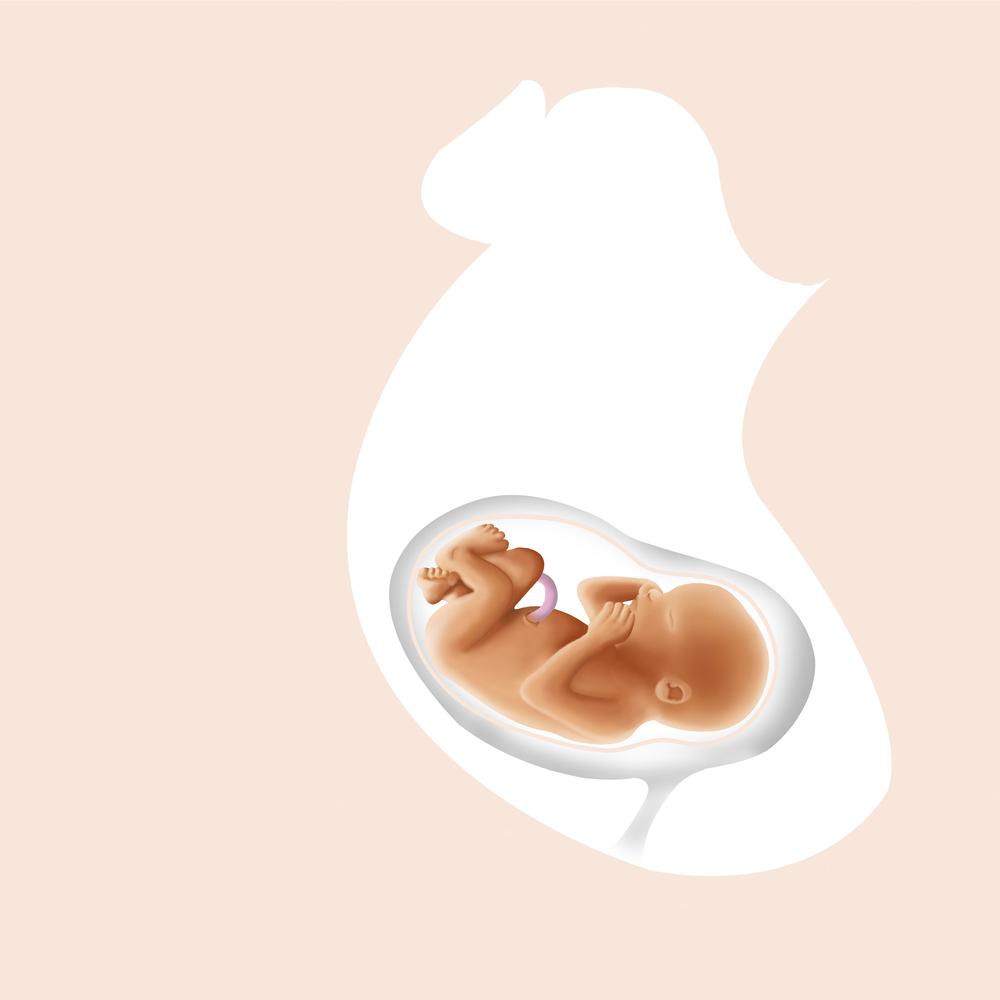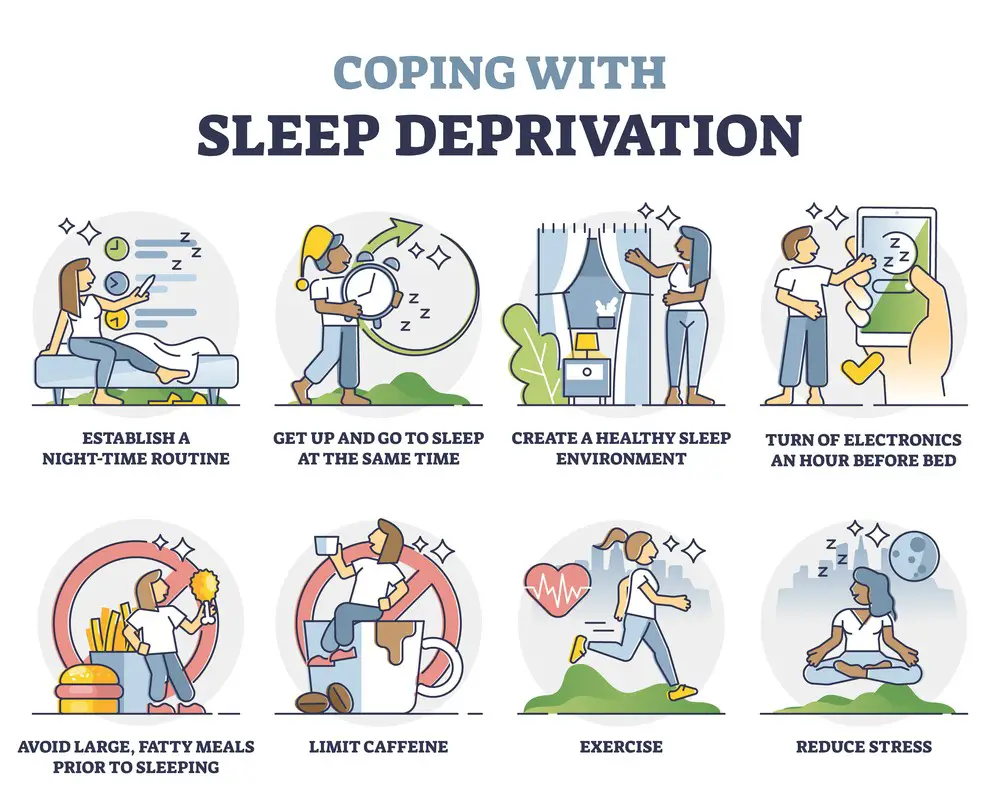Sleep can become a challenge when expecting a baby, especially when your little one is in a transverse position. This means that your baby is lying sideways in your womb and can cause discomfort for mothers. Finding ways to sleep with a transverse baby as your pregnancy progresses can make a difference in your comfort and well-being.
Understanding the transverse position and the strategies to turn your baby into a more favorable position for sleep can significantly improve your overall experience. In addition to addressing your physical comfort, it’s essential to ensure that your baby is not compromised and that you are prepared for delivery. Thankfully, there are ways to cope with this situation, helping you get a good night’s sleep and making it easier to enjoy your pregnancy journey fully.
Key Takeaways
- Transverse baby position can cause discomfort and impact sleep during pregnancy.
- Knowing strategies to turn a transverse baby can help improve comfort and well-being.
- Preparing for delivery and adapting to your baby’s position ensures optimal health for you and your baby.
 Understanding the Transverse Baby Position
Understanding the Transverse Baby Position
A transverse baby position is when your baby lies horizontally in your uterus, with their head on one side and feet on the other. This is known as a transverse lie. It’s common for babies to be in this position in the early weeks and months of pregnancy. However, by the early third trimester, especially beyond 34 weeks, healthcare providers prefer to see the baby in a head-down position.
Transverse lying can lead to some discomfort for you as the baby grows larger. You may find it challenging to get comfortable while sleeping or even during your daily activities. But don’t worry; there are strategies to help you sleep better and ease any discomfort caused by your baby’s transverse position.
Here’s a list of some helpful tips you can try for sleeping with a transverse baby:
- Use pillows to support your body and the baby. Placing pillows around your body can give you the extra support you need to find a comfortable sleeping position.
- Sleep on your side with your top leg bent and your bottom leg straight. This position balances comfort and support for you and your baby.
- Make use of a pregnancy pillow to support your back and belly. Pregnancy pillows come in various shapes and sizes to cater to your preferences and needs.
- Consider sleeping in a recliner or on your couch, as these alternative sleep surfaces can sometimes provide more support than a traditional bed.
Aside from finding ways to sleep more comfortably with a transverse baby, it’s also essential to know that sometimes a transverse fetus will turn itself head down before you go into labor. Nonetheless, if your baby remains persistent in the transverse position, discussing your options with your healthcare provider is vital. Together, you can determine the best approach for you and your baby’s delivery.
Remember, finding a comfortable sleep position is crucial during pregnancy, especially when dealing with transverse lying. Don’t hesitate to try different strategies like pillows, adjusting sleep positions, or changing sleep surfaces. You will find what works best for you and your baby through trial and error.
Causes and Risks Associated
Causes
Several factors can contribute to a baby being in a transverse position:
- Multiples: Carrying more than one baby, such as twins or triplets, increases the likelihood of a transverse position due to limited uterine space.
- Fibroids: These non-cancerous uterine growths can hinder the baby from settling into a head-down position.
- Uterine abnormalities: Irregularly shaped uterus or the presence of a septum can result in a transverse position.
- Placenta previa: This condition occurs when the placenta covers the cervix, preventing the baby from moving into a head-down position.
- Polyhydramnios: Excess amniotic fluid can make it difficult for the baby to settle into a head-down position.
Risks
There are several risks and complications associated with a transverse position:
- Cord prolapse: If the umbilical cord slips into the birth canal before the baby, it can lead to low blood and oxygen supply, potentially resulting in severe consequences for the baby.
- Preterm labor: The transverse position increases the risk of preterm labor, which can have various health implications for your baby.
- C-section delivery: Vaginal delivery is typically not an option for a transverse baby, necessitating a cesarean section delivery.
- Severe abdominal pain: A transverse position can cause increased pressure and pain in your abdomen, making it difficult to sleep and find comfortable positions.
Remember, while there are risks associated with a transverse baby, they are manageable, and your healthcare provider will guide you on the best course of action to ensure a safe delivery for you and your child.
 The Role of Medical Professionals
The Role of Medical Professionals
Doctor’s Role
Your healthcare provider, specifically your doctor, is crucial in ensuring a comfortable and safe pregnancy, especially when your baby is in a transverse position. They will monitor your baby’s position throughout pregnancy and provide personalized advice based on your situation.
Doctors may suggest various techniques and exercises to encourage your baby to turn into a more favorable position for delivery. They might recommend you:
- Practice pelvic tilts or rocking on hands and knees
- Use a birth ball to create gentle movements
In some cases, your doctor may also perform an external cephalic version (ECV), a procedure in which they manually attempt to turn the baby into a head-down position. If the baby remains in a transverse position close to the due date, they might advise for a scheduled cesarean section to ensure safe delivery.
Midwife’s Contribution
A midwife is another medical provider who can offer valuable support and guidance during your pregnancy journey. They bring their expertise in prenatal care, labor, and delivery to provide you with practical tips for sleeping with a transverse baby. Moreover, they can help you create a birth plan that addresses your concerns and preferences.
Midwives may recommend alternative methods to reposition your baby, such as:
- Moxibustion therapy, which involves applying heat to specific pressure points
- Acupuncture relaxes the uterus and encourages baby movements
Additionally, midwives can teach you coping strategies to alleviate the discomfort caused by your baby’s position, such as deep breathing techniques and relaxation exercises. Always consult your doctor or midwife before attempting new practices to ensure they are appropriate and safe for you and your baby.
Methods to Turn a Transverse Baby
External Cephalic Version
External cephalic version (ECV) is a procedure where a healthcare professional manually turns the baby to a head-down position from outside of the abdomen. This technique is typically performed around 36-37 weeks, and it may take several attempts to achieve the desired position. It’s essential to be under the supervision of an experienced professional during this procedure, as there is a risk of complications like placental abruption or umbilical cord prolapse.
Spinning Babies Technique
The Spinning Babies Technique is a series of specific positions and exercises aimed at aligning the mother’s pelvis and baby’s position for optimal fetal positioning. These activities include the forward-leaning inversion, breech tilt, and side-lying release. Practicing these techniques daily can help encourage the baby to turn into a head-down position.
- Forward-Leaning Inversion: You lean forward from an elevated surface to encourage the baby to move towards your chest and eventually turn.
- Breech Tilt: You lie on your back with your hips elevated to allow gravity to assist the baby’s turn.
- Side-Lying Release: You lie on your side, supported by pillows, to help relax and align the pelvic ligaments.
Moxibustion
Moxibustion is a traditional Chinese medicine technique that involves burning an herb called “moxa” near specific acupuncture points. For turning a transverse baby, one common moxibustion practice involves gently warming the area near the mother’s little toes for 15-20 minutes each day. It is believed that this heat stimulates energy flow within the body, potentially encouraging the baby to shift into a head-down position.
Chiropractic Care
Chiropractic care, particularly the Webster technique, can benefit pregnant mothers with transverse babies. The Webster technique balances the mother’s pelvis, optimizing the space available to the baby. The baby is more likely to naturally move into a head-down position by addressing pelvic alignment.
Exercises
Incorporating specific exercises into your daily routine can encourage the baby to change positions. Some suggestions include:
- Pelvic tilts: Gently rocking your pelvis back and forth on your hands and knees.
- Hip circles: Standing and rotating your hips in a circular motion.
- Walking or swimming: Gentle physical activity that promotes overall well-being and can help shift the baby’s position.
Remember, it’s crucial to consult with your healthcare provider before attempting these methods to ensure they’re safe for you and your baby.
Sleeping with a Transverse Baby
Having a transverse baby can make it challenging to get a good night’s sleep as the baby is positioned horizontally in the uterus, with their head on one side and their feet on the other. However, there are ways to make yourself more comfortable and sleep better during this time. This section will discuss the best sleeping positions and functional accessories to help you sleep with a transverse baby.
Best Sleeping Positions
- Side-lying: Try sleeping on your side with your top leg bent and your bottom leg straight. This position allows for better support for your belly while sleeping with a transverse baby. You can alternate between your left and right sides, but some experts suggest that lying on your left side can improve blood flow to your baby.
- Reclined position: If side-lying isn’t comfortable, you may have better luck sleeping in a reclined position. You can try sleeping in a recliner or on your couch, which provides more support for your back and belly. Use pillows to support your body and the baby, ensuring you are comfortable and well-supported throughout the night.
Useful Accessories
- Pregnancy pillow: Investing in a pregnancy pillow can significantly affect your comfort while sleeping with a transverse baby. These pillows support your back, belly, and legs, making finding a comfortable sleeping position easier. Various pregnancy pillows are available, so choose one that suits your needs and preferences.
- Regular pillows: You don’t necessarily need a special pregnancy pillow to support your body and the baby; you can use regular pillows strategically placed around your body. Use a pillow between your knees to align your hips and reduce stress on your lower back. Place another pillow under your belly to support and prevent strain on your back and abdominal muscles.
Remember, finding the right combination of sleeping positions and supportive accessories can make all the difference in getting a good night’s sleep with a transverse baby. Take the time to explore different options and adjust to ensure you are as comfortable as possible during this exciting stage of your life.
 Dealing with Discomfort and Pain
Dealing with Discomfort and Pain
Breathing Techniques
When experiencing discomfort and pain from a transverse baby, breathing techniques can help. Conscious and deep breathing can relax your body, alleviate stress, and potentially encourage the baby to shift positions. Try these simple techniques:
- Inhale deeply through your nose, filling your lungs.
- Exhale slowly through your mouth, completely emptying your lungs.
- Repeat the process for a few minutes, focusing on your breath.
Yoga and Stretching
Gentle yoga and stretching can help relieve lower back and hip discomfort caused by a transverse baby. Focus on poses targeting these areas:
- Cat-Cow pose: Helps to stretch and strengthen the lower back.
- Child’s pose: Provides relief for the hips and lower back.
- Pigeon pose: Stretches the hips and glutes, promoting flexibility.
Remember to listen to your body and only do what feels comfortable during pregnancy.
Massage
Massaging your lower back, hips, and thigh muscles can help alleviate some discomfort associated with a transverse baby. You could:
- Ask a partner to massage the affected areas gently.
- Use a foam roller or tennis ball to apply pressure and release tension.
- Visit a prenatal massage therapist for a professional treatment.
Always communicate your needs, including pressure and areas to focus on, with your massage therapist.
Acupuncture
Acupuncture is another alternative to help manage pain and discomfort during pregnancy. Some pregnant women find relief by receiving acupuncture from a qualified practitioner, as it may:
- Reduce pain in the lower back and hips.
- Improve circulation and reduce inflammation.
- Alleviate heartburn and other pregnancy-related symptoms.
Preparing for Delivery
As you prepare for the birth of your transverse baby, it’s essential to be aware of the different delivery options, potential outcomes, and possible complications that may arise. In this section, we will discuss the anticipation of a C-section, undergoing a vaginal delivery, and recognizing potential complications.
Anticipation of C-Section
For many mothers carrying a transverse baby, a cesarean section (C-section) may be recommended or required to deliver their baby safely. This may be a planned procedure or become necessary during labor if the baby remains in the transverse position. It’s essential to:
- Discuss the possibility of a C-section with your healthcare provider
- Understand the potential risks and benefits of a C-section
- Prepare yourself mentally and emotionally for this type of delivery
Undergoing Vaginal Delivery
Though less common for transverse babies, vaginal delivery is still possible in some cases. A vertex position (head-down) is ideal for smooth passage through the birth canal. To increase the chances of a successful vaginal delivery, consider:
- Trying various techniques to encourage your baby to move into a head-down position, such as the external cephalic version (ECV).
- Pursuing a vaginal birth after cesarean (VBAC) if you have previously had a C-section
- Monitoring your baby’s position closely during labor and delivery to ensure a safe vaginal birth
Possible Complications
As with any birth, there are potential complications to be aware of when delivering a transverse baby. Some of these include:
- Cord prolapse: The umbilical cord may slip into the vagina before the baby, which can be a serious complication
- Preterm labor: Transverse babies may be more likely to initiate early labor
- Shoulder dystocia: The baby’s shoulder may become stuck in the birth canal during a vaginal delivery, requiring medical intervention
Remember, it’s essential to have open communication with your healthcare provider throughout your pregnancy to ensure the best possible care for both you and your baby. They will help you make informed decisions and prepare for a safe and healthy delivery.
Dietary Tips and Lifestyle Changes
When sleeping with a transverse baby, making some dietary and lifestyle adjustments can make a significant difference. Not only will these changes help you sleep better, but they’ll also support the optimal positioning of your baby.
First and foremost, ensure that you maintain a balanced diet rich in nutrients to support your well-being and that of your baby. Make sure to consume plenty of fruits, vegetables, whole grains, lean protein, and healthy fats. Staying hydrated is equally important, so don’t forget to drink plenty of water throughout the day.
In addition to a healthy diet, you should try to maintain an active lifestyle during pregnancy. Regular, low-impact exercises such as prenatal yoga or swimming can help strengthen your back, improve blood flow, and increase the likelihood of your baby moving into a head-down position. When you exercise, always pay attention to your body’s signals and avoid strenuous activities or positions that could cause injury or breathing problems.
Consider using a pregnancy pillow or specialized support device to support your growing uterus and placenta when you sleep. These tools can help alleviate discomfort by offering more support and cushioning for your back, stomach, and hips. Sleeping on your side, with a pillow between your knees, can also be helpful. This position promotes better blood flow, keeps the top leg from resting on the bottom leg, and can encourage the baby to move towards the cervix.
Here are some key takeaways:
- Maintain a nutrient-rich, balanced diet to support your baby’s optimal positioning.
- Stay hydrated by drinking plenty of water.
- Engage in low-impact exercises like prenatal yoga or swimming to strengthen your back and increase the likelihood of your baby moving into a head-down position.
- Use a pregnancy pillow or support device for added comfort and support during sleep.
- Sleep on your side with a pillow between your knees to promote better blood flow and encourage the baby to move towards the cervix.
By incorporating these dietary tips and lifestyle changes, you’ll be well on your way to sleeping more comfortably with your transverse baby. Listen to your body and consult your healthcare provider if you have any concerns or questions is essential. Happy sleeping!
Conclusion
In summary, sleeping with a transverse baby might seem challenging initially, but with the right approach, you can make it a comfortable experience for you and your baby. Remember, side sleeping is usually the best position, as it helps take the weight off your back and promotes better blood circulation. Experiment with different side positions and use pillows between your legs to increase your comfort.
Additionally, it’s essential to be patient and consistent. Sleep patterns for your baby can vary, and helping them develop healthy sleep habits is a gradual process. Establishing a bedtime routine is valuable for creating a peaceful sleep environment and encouraging better rest for you and your little one.
Finally, don’t forget that every baby is unique, and your journey will be distinctive to you and your transverse baby. Always listen to your body and consult your healthcare professional for personalized advice. As you stay dedicated to trying different strategies and maintaining a positive attitude, you’ll find the most effective solutions for a restful night with your transverse baby. Happy sleeping!
Frequently Asked Questions

What are the best sleeping positions with a transverse baby?
Sleeping on your side, particularly your left side, can be the most comfortable position with a transverse baby. With your knees bent, the fetal position is also recommended as it can reduce pressure on your heart and increase blood flow. You can use specialized pregnancy pillows to help support your back and legs during sleep to improve your comfort.
How can I encourage my transverse baby to turn?
There are techniques you can try to help encourage your baby to change position:
- Spending time on your hands and knees, allowing your baby to use gravity to move
- Rock on a birthing ball to create a gentle motion
- Gentle stretches, like pelvic tilts, give your baby more space to turn
- Consult a healthcare provider for other possible options, like an ECV (External Cephalic Version)
Key takeaway: Always consult your healthcare provider before attempting techniques to encourage your baby to turn.
What causes a baby to be in the transverse position?
Several factors could contribute to a baby being in the transverse position, such as the shape of the uterus, the location of the placenta, and multiple pregnancies. Sometimes, a baby naturally assumes the transverse position without any specific cause.
Is a transverse position dangerous for the baby?
The transverse position is not necessarily dangerous, but it can complicate the delivery process. A baby in the transverse position cannot safely be delivered vaginally, which may lead to the need for a cesarean section.
How long can a baby remain transverse?
A baby can remain transverse up until the last few weeks of pregnancy. In many cases, the baby will eventually move into a head-down position as your due date approaches. However, some babies may remain in the transverse position until labor begins.
How can I help my baby move from the transverse position?
There are several strategies you can try:
- Practice good posture throughout the day to give your baby more room to move
- Encourage movement by gently massaging your abdomen
- Do relaxing activities, such as meditation or prenatal yoga, that may help your baby change positions
- Consult your healthcare provider for their expert recommendations and advice
Key takeaway: Speak with your healthcare provider about your concerns and follow their guidance to help your baby move from the transverse position.
- The Burnout Epidemic: Why We’re All Feeling Overwhelmed and How to Cope - February 9, 2024
- How to Live a Peaceful Life - February 9, 2024
- Useful Information You Should Know About Health Screenings - February 8, 2024
This site contains affiliate links to products. We will receive a commission for purchases made through these links.


 Understanding the Transverse Baby Position
Understanding the Transverse Baby Position The Role of Medical Professionals
The Role of Medical Professionals Dealing with Discomfort and Pain
Dealing with Discomfort and Pain
